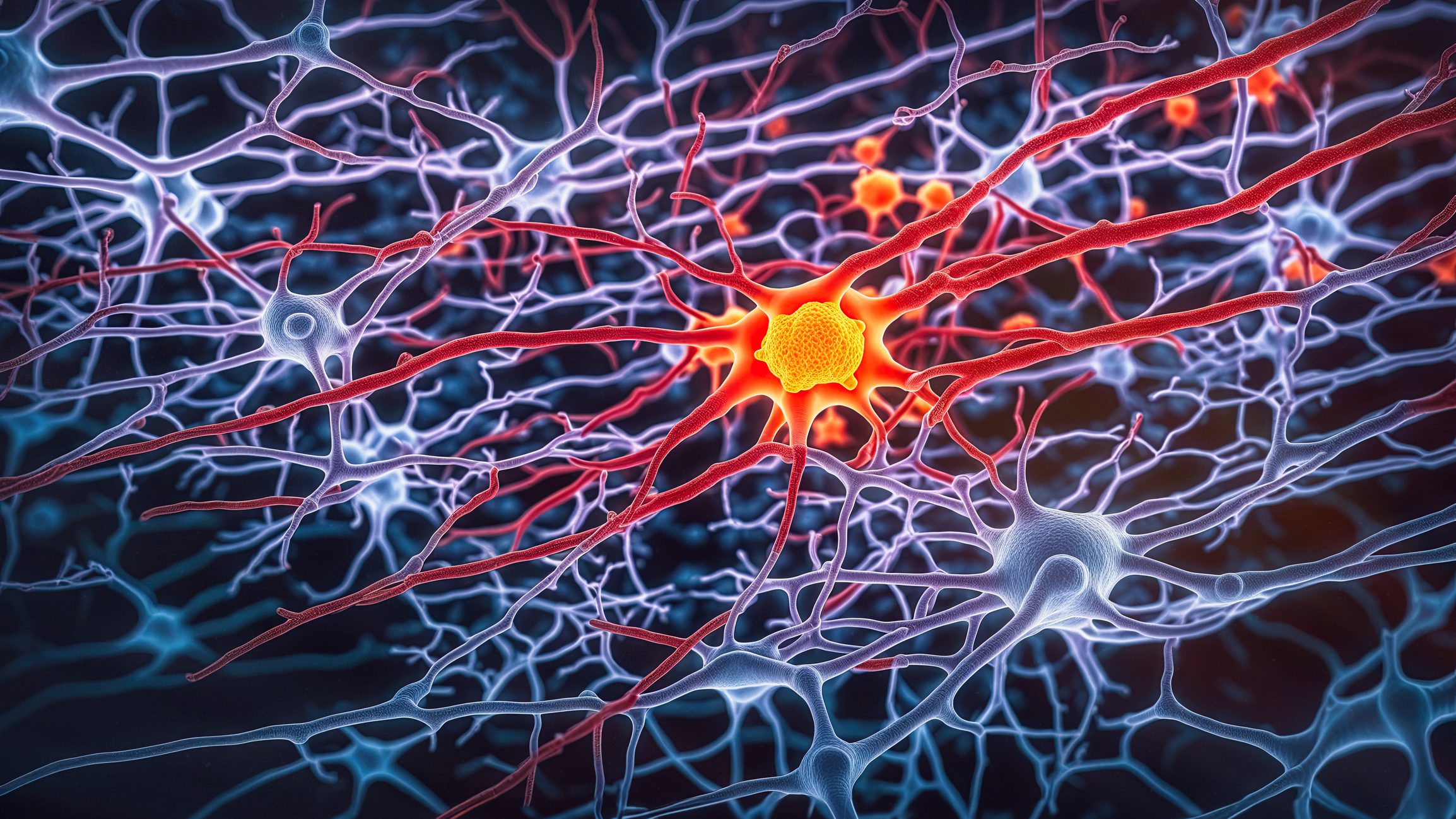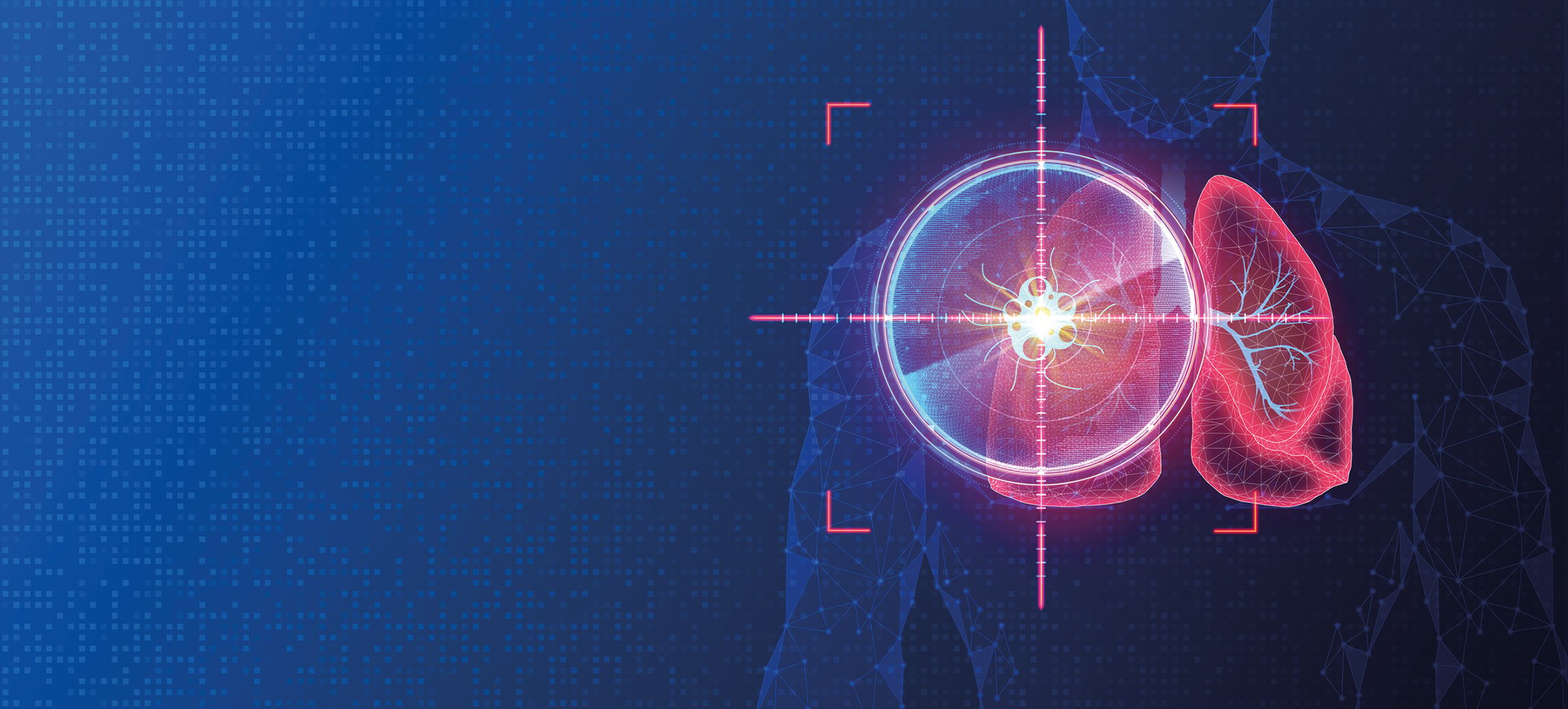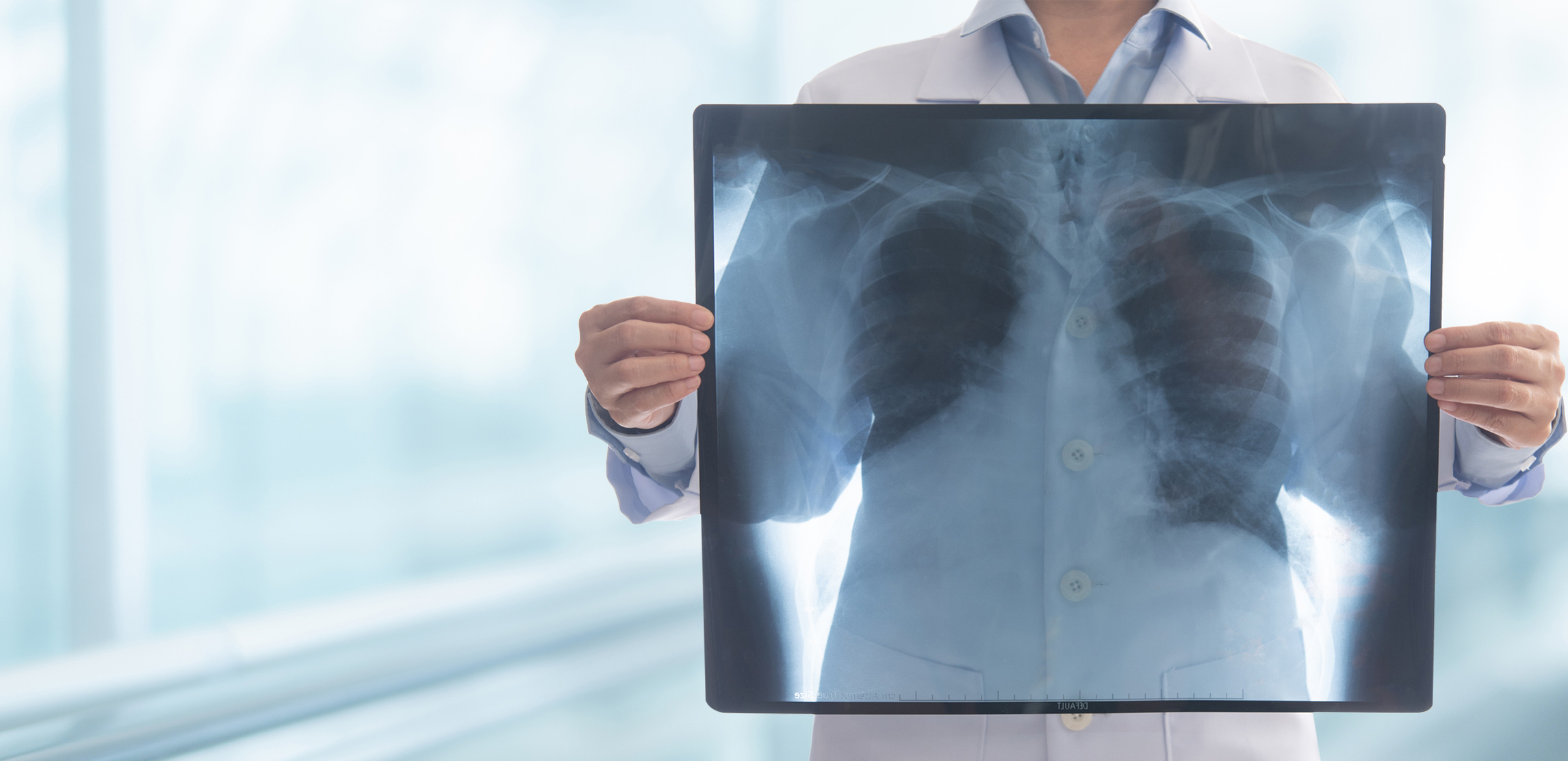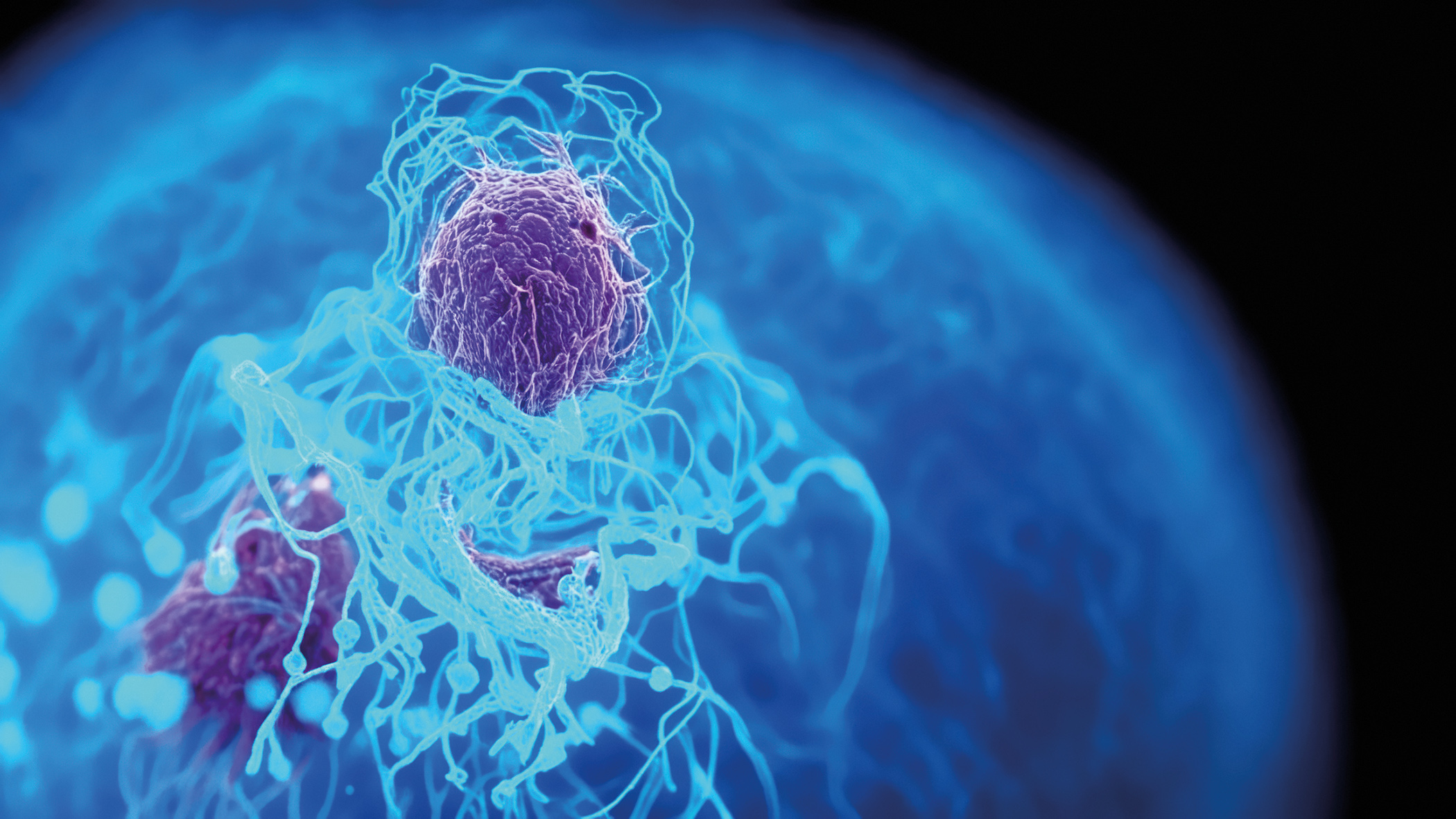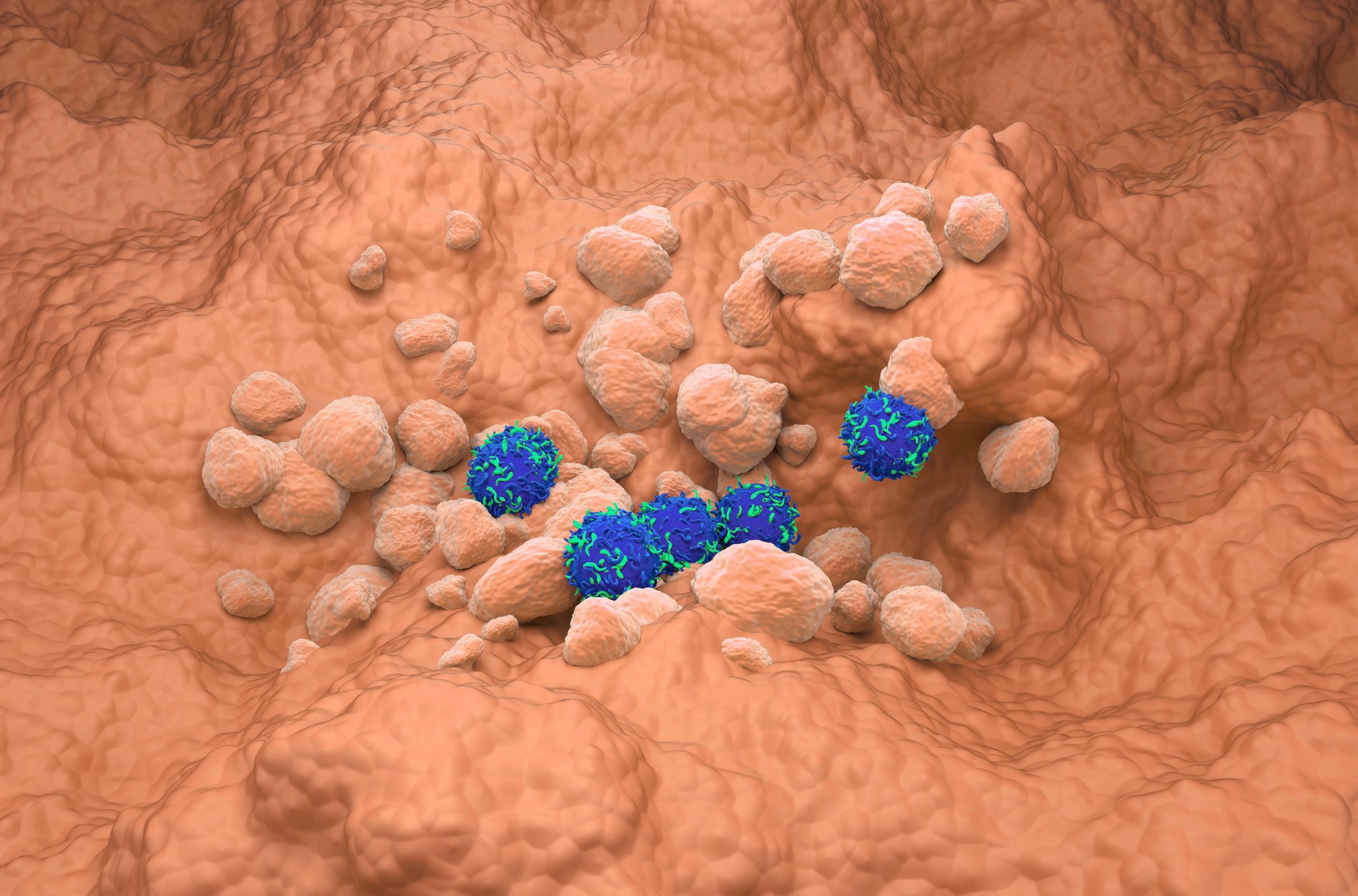Various methods of tissue ablation using thermal effects, thermoablation, have been used in routine clinical practice since the 1970s. Thermoablation is an alternative therapy for benign symptomatic thyroid nodules and symptomatic thyroid cysts. The rate of hypothyroidism after thermal ablation of a hyperfunctional thyroid nodule is less than 0.01%.
Various methods of tissue ablation by thermal effects, thermoablation, have been used in routine clinical practice since as early as the 1970s, and are currently considered established therapies in some cases in the treatment of liver, lung, spleen, bone, and prostate tumors. The principle of operation is the ablative destruction of tissue by heat. Thermal ablation of thyroid nodules does not compete with established procedures for the treatment of benign thyroid diseases such as drug therapy, radioiodine therapy or thyroidectomy, but should rather be seen as a useful complement to existing therapeutic modalities.
Basics of thermal ablation
The goal of thermoablation of thyroid nodules is irreversible coagulation necrosis of the thyroid nodule with subsequent volume reduction. During thermal ablation of thyroid nodules, a temperature of at least 60°C is aimed for in the ablation zone. At ablation temperatures of 60°C, the thermal effect occurs almost immediately and irreversible damage to the node subsequently occurs. Vessels with a diameter of less than 3 mm are destroyed by the heat (“thermal embolization” of the vessels). This is a desired effect, as it destroys the intrathyroidal vessels supplying the nodule. This effect does not occur with vessels larger than 4 mm in diameter. In these cases, there is a loss of energy, also called “heat sink”.
Radiofrequency ablation (RFA)
Radiofrequency ablation involves placing a probe percutaneously into the nodule. The probe is connected to a radio frequency alternating current generator. A current flows between two electrodes in the area of the active tip. The large local current density in a small area creates ionic friction energy (heat), which forms the ablation zone.
RFA of benign thyroid nodules
Metanalyses [1,2] have examined the effect of RFA on thyroid nodules. The meta-analyses showed a statistically significant improvement in outcome (volume, symptomatology, cosmesis, medication requirements). The average volume reduction after RFA was 8.9 ml [2] to 9.77 ml [1]. The outcome was dependent on nodal morphology [3]. In the monocentric randomized trials, the volume reduction of primary cystic thyroid nodules was 87% to 93% [4,5] and in the randomized case-control study of solid nodules at 6 months was 49.1% ± 19.5% compared with the control group [6]. In the randomized prospective study, the smaller a thyroid nodule, the greater the relative volume reduction [7]. In this regard, RFA was performed once or more, unilaterally or bilaterally, for benign cold or hyperfunctional thyroid nodules [3,8–14]. RFA is also possible after a lobectomy has been performed [15]. In the case of thyroid cysts with viscous colloid, RFA can be performed after aspiration of the viscous cyst contents. After thermal ablation of thyroid cysts, recurrences are very rare, thyroid cysts can be treated very well with thermal ablation [16]. Even after a preceding ethanol injection, further significant volume reduction is achieved by RFA [17,18]. Monopolar RFA of hyperfunctional thyroid nodules with decreased TSH requires multiple RFA treatments. After a single RFA of hyperfunctional nodules, 50% to 67% of patients were still hyperthyroid [13,21,22]. With bipolar RFA of hyperfunctional thyroid nodules, only 10% are still hyperfunctional after a single treatment. This is explained by the remaining rim of the hyperfunctional node to spare thermo-sensitive structures. Bipolar RFA is superior to monopolar RFA in the treatment of hyperfunctioning thyroid glands [11,19,20].
Because only the hyperfunctional portion of the nodule is destroyed, the rate of hypothyroidism is less than 1%, whereas the rate of hypothyroidism with lifelong levothyroxine use after radioiodine therapy is 10% in the first year.
In a thyroid nodule with Thy 2 classification in fine needle aspiration, there was volume depletion of 67% in the observation period of 24 months. Only in Thy3 classification, volume increase occurred in two of six thyroid nodules. In the two thyroid nodules, follicular carcinoma and microfollicular neoplasia were found histologically postoperatively [23]. In a long-term study over 4 years, volume increase after RFA was found in the marginal area of the nodule with a frequency of 5.6% [3]. The Italian expert committee recommends RFA for hyperfunctional thyroid nodules and for non-hyperfunctional thyroid nodules larger than 20 ml if patients refuse surgical therapy or radioiodine therapy [24]. The Italian Medical Radiological Society recommends RFA for all benign thyroid nodules [25]. There is a significant decrease in echogenicity and Doppler signal within the ablation zone after bipolar RFA with “multi-shot” technique [26,27]. The Korean Task Force (KSThR) recommends RFA with “moving-shot” technique for all benign thyroid nodules regardless of size if the thyroid nodule causes clinical symptoms [28]. Successful ablation of thyroid nodules is possible with both shot techniques and with monopolar and bipolar RFA probes [26,27,29].
Complications after RFA are rare [8,22,25,28,30]. In the retrospective analysis with four centers from Korea, the complication rate was 0.2% after 2616 treatments [31], and in the retrospective multicenter study with 13 thyroid centers, the overall complication rate was 3.3%, with permanent complications (hypothyroidism and thyroid nodal rupture) documented in only 2 patients. In long-term studies over four years, the complication rate was 3.6% [3]. Bipolar RFA also show low complication rates [26,27]. Compared to thyroidectomy for benign multifocal thyroid nodules, the complication risks of RFA are lower [32].
RFA of lymph node metastases or local recurrences of thyroid carcinoma.
In some cases, surgery or radioiodine therapy after thyroidectomy cannot be performed for known metastases of well-differentiated papillary thyroid carcinoma. After RFA of local recurrences or lymph node metastases, there was a significant volume reduction of metastases from 53% to 95% and a decrease in tumor maker thyroglobulin [33–37]. Posttherapeutic control by biopsy showed no evidence of residual malignant tissue and no evidence of recurrence of the treated side after RFA [38–40]. Also in the case series with well-differentiated papillary and follicular thyroid carcinoma recurrences, long-term follow-up after RFA showed no evidence of progression [41]. Also, in combination with radioiodine therapy, RFA was shown in a prospective study to successfully destroy thyroid remnants after thyroidectomy [42]. Therefore, the expert committees recommend palliative RFA for recurrences and metastases of well-differentiated thyroid carcinoma when surgical therapy or radioiodine therapy are not possible or are refused by the patient [24,25,28].
The complication rate of RFA of metastases and local recurrences was approximately 7%, and life-threatening complications were not observed [25,36]. In direct comparison with reoperation for local recurrence, lower complication rates were found with RFA for the same effectiveness [40].
Microwave ablation (MWA)
In MWA, a microwave probe is inserted percutaneously into the thyroid nodule. A microwave field is generated in the area of the active tip. Excitation of dipole compounds (tissue water, molecules) attenuates the electromagnetic wave. The attenuation of the electromagnetic wave is converted into heat (ablation energy).
MWA of benign thyroid nodules
Already with the first prospective study, a volume reduction of 46 ± 30% after 9 months was achieved in benign thyroid nodules using cooled MWA [43]. In the retrospective work with 222 patients and 477 nodes, the volume reduction was 41%. Volume reduction was dependent on nodal morphology. Cystic nodules were found to have an 80% volume reduction, echocomplex nodules were found to have a 72% volume reduction, and solid nodules were found to have a 27% volume reduction [44]. The uncooled MWA probes showed a significant volume reduction of over 50% after just 3 months [45,46]. In combination with radioiodine therapy, the radioiodine activity required for radioiodine therapy was significantly reduced in very large strumen, with a volume reduction of 30% [47,48]. Scintigraphy can be used for early verification of the effectiveness of thermal ablation before volumetric progress monitoring is possible [45–48]. Using MWA, benign cold or hyperfunctional thyroid nodules have been successfully treated [49]. Due to the thicker MWA probe, a small capsular hemorrhage of the thyroid gland smaller than 1 mm was found in 4 of 11 patients [43], with the uncooled MWA probes a superficial small hematoma was found in all patients [45]. Life-threatening or permanent complications did not occur in any study [43–45,50,51].
MWA of lymph node metastases or local recurrences of thyroid carcinoma.
In this prospective study of 17 patients with local recurrence of papillary thyroid carcinoma, one or up to four MWAs were performed. Volume reduction was 91 ± 14% after 18 months. In 30% of cases, no local recurrence was detected after treatment, and there were no life-threatening or permanent complications [52]. In another study, 21 stage T1N0M0 papillary microcarcinomas were treated by MWA. All microcarcinomas could be completely ablated using one MWA session. After 11 months of follow-up, no local recurrence was found [53]. No life-threatening or permanent complications occurred.
Highly focused ultrasound
In HIFU, thermal ablation is performed non-invasively. The ultrasound probe operates at 2 MHz and is curved inward (concave). This results in a focusing and targeted bundling of the ultrasound through the skin into the thyroid nodule. Ablation involves heating a volume the size of a grain of rice to about 85°C. The advantage of this non-invasive thermoablative procedure is that there is no risk of infection. The concavity of the ultrasonic head simultaneously determines the degree of focus and thus also the depth at which the thermal effect occurs.
HIFU of benign thyroid nodules
In the 2011 feasibility study, 25 patients were treated with HIFU for multinodular goiter for the first time. 16 patients showed significant changes on ultrasound and in 17 thyroid nodules changes such as necrosis were found in the subsequent histopathological evaluation [54]. Scintigraphy can be used for early verification of the effectiveness of thermal ablation before volumetric progress monitoring is possible [55,56]. HIFU has been used to successfully treat benign cold, indifferent or hyperfunctional thyroid nodules [55,56]. The volume reduction after 3 months was 49 to 55% after a single HIFU treatment. In a prospective study with 20 patients, the volume reduction was 49% [57].
Pretherapeutically, the median nodule volume was 5 ml; in addition, safety distances were defined by the system, thus marginal areas of the thyroid nodule were outside the ablation zone [56–59]. Life-threatening or permanent complications after HIFU did not occur, and immunogenic autoimmune thyroidopathy is also not induced by HIFU in the thyroid gland [54–59]. Knowledge of the various techniques (RFA, MWA, HIFU) with their advantages and disadvantages is elementary for individual therapy using thermal ablation. These can be learned at the DZTA – Deutsches Zentrum für Thermoablation e.V. (German Center for Thermoablation).
The costs for the therapy are covered by some health insurance companies from Switzerland. Requests from Switzerland can therefore be sent to the German Center for Thermaoblation e.V..
Take-Home-Messages
- Thermoablation is an alternative therapy for benign symptomatic thyroid nodules and symptomatic thyroid cysts.
- The rate of hypothyroidism after thermal ablation of a hyperfunctional thyroid nodule is less than 0.01%.
- A conclusive fine-needle biopsy is required before thermal ablation of a hypofunctional node.
- The different techniques RFA, MWA, LASER and HIFU can be used in the
German Center for Thermoablation e.V.
Literature:
- Fuller CW, Nguyen SA, Lohia S, Gillespie MB: Radiofrequency ablation for treatment of benign thyroid nodules: systematic review. The Laryngoscope 2014; 124(1):346–353.
- Ha EJ, Baek JH, Kim KW, et al.: Comparative efficacy of radiofrequency and laser ablation for the treatment of benign thyroid nodules: systematic review including traditional pooling and bayesian network meta-analysis. The Journal of clinical endocrinology and metabolism 2015; 100(5): 1903–1911.
- Lim HK, Lee JH, Ha EJ, et al.: Radiofrequency ablation of benign non-functioning thyroid nodules: 4-year follow-up results for 111 patients. European radiology 2013; 23(4): 1044–1049.
- Baek JH, Ha EJ, Choi YJ, et al.: Radiofrequency versus Ethanol Ablation for Treating Predominantly Cystic Thyroid Nodules: A Randomized Clinical Trial. Korean journal of radiology 2015; 16(6): 1332–1340.
- Sung JY, Baek JH, Kim KS, et al.: Single-session treatment of benign cystic thyroid nodules with ethanol versus radiofrequency ablation:
a prospective randomized study. Radiology 2013; 269(1): 293–300. - Baek JH, Kim YS, Lee D, et al.: Benign predominantly solid thyroid nodules: prospective study of efficacy of sonographically guided radiofrequency ablation versus control condition. AJR. American journal of roentgenology 2010; 194(4): 1137–1142.
- Cesareo R, Pasqualini V, Simeoni C, et al.: Prospective study of effectiveness of ultrasound-guided radiofrequency ablation versus control group in patients affected by benign thyroid nodules. The Journal of clinical endocrinology and metabolism 2015; 100(2): 460–466.
- Jeong WK, Baek JH, Rhim H, et al.: Radiofrequency ablation of benign thyroid nodules: safety and imaging follow-up in 236 patients. European radiology 2008; 18(6): 1244–1250.
- Ji Hong M, Baek JH, Choi YJ, et al.: Radiofrequency ablation
is a thyroid function-preserving treatment for patients with bilateral benign thyroid nodules. Journal of vascular and interventional radiology : JVIR 2015; 26(1): 55–61. - Kim Y, Rhim H, Tae K, et al.: Radiofrequency ablation of benign cold thyroid nodules: initial clinical experience. Thyroid : official journal
of the American Thyroid Association 2006; 16(4): 361–367. - Baek JH, Moon W, Kim YS, et al.: Radiofrequency ablation for the treatment of autonomously functioning thyroid nodules. World journal of surgery 2009; 33(9): 1971–1977.
- Valcavi R, Tsamatropoulos P: HEALTH-RELATED QUALITY OF LIFE AFTER PERCUTANEOUS RADIOFREQUENCY ABLATION OF COLD, SOLID, BENIGN THYROID NODULES: A 2-YEAR FOLLOW-UP STUDY IN 40 PATIENTS. Endocrine practice: official journal of the American College of Endocrinology and the American Association of Clinical Endocrinologists 2015; 21(8): 887–896.
- Spiezia S, Garberoglio R, Milone F, et al.: Thyroid nodules and related symptoms are stably controlled two years after radiofrequency thermal ablation. Thyroid: official journal of the American Thyroid Association 2009; 19(3): 219–225.
- Huh JY, Baek JH, Choi H, et al.: Symptomatic benign thyroid nodules: efficacy of additional radiofrequency ablation treatment session-prospective randomized study. Radiology 2012; 263(3): 909–916.
- Ha EJ, Baek JH, Lee JH, et al.: Radiofrequency ablation of benign thyroid nodules does not affect thyroid function in patients with previous lobectomy. Thyroid : official journal of the American Thyroid Association 2013; 23(3): 289–293.
- Sung JY, Kim YS, Choi H, et al.: Optimum first-line treatment technique for benign cystic thyroid nodules: ethanol ablation or radiofrequency ablation? AJR. American journal of roentgenology 2011; 196(2): W210–214.
- Jang SW, Baek JH, Kim JK, et al.: How to manage the patients with unsatisfactory results after ethanol ablation for thyroid nodules: role of radiofrequency ablation. European journal of radiology 2012; 81(5): 905–910.
- Lee JH, Kim YS, Lee D, et al.: Radiofrequency ablation (RFA) of benign thyroid nodules in patients with incompletely resolved clinical problems after ethanol ablation (EA). World journal of surgery 2010; 34(7):1488–93.
- Faggiano A, Ramundo V, Assanti AP, et al.: Thyroid nodules treated with percutaneous radiofrequency thermal ablation: a comparative study. The Journal of clinical endocrinology and metabolism 2012; 97(12): 4439–4445.
- Deandrea M, Limone P, Basso E, et al.: US-guided percutaneous radiofrequency thermal ablation for the treatment of solid benign hyperfunctioning or compressive thyroid nodules. Ultrasound in medicine & biology 2008; 34(5): 784–791.
- Bernardi S, Dobrinja C, Fabris B, et al.: Radiofrequency ablation compared to surgery for the treatment of benign thyroid nodules. International journal of endocrinology 2014; 2014: 934595.
- Ugurlu MU, Uprak K, Akpinar IN, et al.: Radiofrequency ablation of benign symptomatic thyroid nodules: prospective safety and efficacy study. World journal of surgery 2015; 39(4): 961–968.
- Dobrinja C, Bernardi S, Fabris B, et al.: Surgical and Pathological Changes after Radiofrequency Ablation of Thyroid Nodules. International journal of endocrinology 2015; 2015: 576576.
- Garberoglio R, Aliberti C, Appetecchia M, et al.: Radiofrequency ablation for thyroid nodules: which indications? The first Italian opinion statement. Journal of ultrasound 2015; 18(4): 423–430.
- Bernardi IC de, Floridi C, Muollo A, et al.: Vascular and interventional radiology radiofrequency ablation of benign thyroid nodules and recurrent thyroid cancers: literature review. La Radiologia medica 2014; 119(7): 512–520.
- Korkusuz Y, Erbelding C, Kohlhase K, et al.: Bipolar Radiofrequency Ablation of Benign Symptomatic Thyroid Nodules: Initial experience with Bipolar Radiofrequency. RoFo: Fortschritte auf dem Gebiete der Rontgenstrahlen und der Nuklearmedizin 2015.
- Li X, Xu H, Lu F, et al.: Treatment efficacy and safety of ultrasound-guided percutaneous bipolar radiofrequency ablation for benign thyroid nodules. The British journal of radiology 2016: 20150858.
- Na DG, Lee JH, Jung SL, et al.: Radiofrequency ablation of benign thyroid nodules and recurrent thyroid cancers: consensus statement and recommendations. Korean journal of radiology 2012; 13(2): 117–125.
- Deandrea M, Sung JY, Limone P, et al.: Efficacy and Safety of Radiofrequency Ablation Versus Observation for Nonfunctioning Benign Thyroid Nodules: A Randomized Controlled International Collaborative Trial. Thyroid: official journal of the American Thyroid Association 2015; 25(8): 890–896.
- Baek JH, Lee JH, Sung JY, et al.: Complications encountered in the treatment of benign thyroid nodules with US-guided radiofrequency ablation: a multicenter study. Radiology 2012; 262(1): 335–342.
- Shin JH, Jung SL, Baek JH, et al.: Rupture of benign thyroid tumors after radio-frequency ablation. AJNR. American journal of neuroradiology 2011; 32(11): 2165–2169.
- Che Y, Jin S, Shi C, Wang L, et al.: Treatment of Benign Thyroid Nodules: Comparison of Surgery with Radiofrequency Ablation. AJNR. American journal of neuroradiology 2015; 36(7): 1321–1325.
- Baek JH, Kim YS, Sung JY, et al.: Locoregional control of metastatic well-differentiated thyroid cancer by ultrasound-guided radiofrequency ablation. AJR. American journal of roentgenology 2011; 197(2): W331–336.
- Dupuy DE, Monchik JM, Decrea C, Pisharodi L. Radiofrequency ablation of regional recurrence from well-differentiated thyroid malignancy. Surgery 2001; 130(6):971–7.
- Monchik JM, Donatini G, Iannuccilli J, Dupuy DE: Radiofrequency ablation and percutaneous ethanol injection treatment for recurrent local and distant well-differentiated thyroid carcinoma. Annals of surgery 2006; 244(2): 296–304.
- Lim HK, Baek JH, Lee JH, et al.: Efficacy and safety of radiofrequency ablation for treating locoregional recurrence from papillary thyroid cancer. European radiology 2015; 25(1): 163–170.
- Wang L, Ge M, Xu D, et al.: Ultrasonography-guided percutaneous radiofrequency ablation for cervical lymph node metastasis from thyroid carcinoma. Journal of cancer research and therapeutics 2014; 10 Suppl: C144–149.
- Lee SJ, Jung SL, Kim BS, et al.: Radiofrequency ablation to treat loco-regional recurrence of well-differentiated thyroid carcinoma. Korean journal of radiology 2014; 15(6): 817–826.
- Suh CH, Baek JH, Choi YJ, et al.: Efficacy and Safety of Radiofrequency and Ethanol Ablation for Treating Locally Recurrent Thyroid Cancer: A Systematic Review and Meta-Analysis. Thyroid: official journal of the American Thyroid Association 2016.
- Kim J, Yoo WS, Park YJ, et al: Efficacy and Safety of Radiofrequency Ablation for Treatment of Locally Recurrent Thyroid Cancers Smaller than 2 cm. Radiology 2015; 276(3): 909-918.
- Guenette JP, Monchik JM, Dupuy DE: Image-guided ablation of postsurgical locoregional recurrence of biopsy-proven well-differentiated thyroid carcinoma. Journal of vascular and interventional radiology: JVIR 2013; 24(5): 672-679.
- Long B, Li L, Yao L, et al: Combined use of radioiodine therapy and radiofrequency ablation in treating postsurgical thyroid remnant of differentiated thyroid carcinoma. Journal of cancer research and therapeutics 2015; 11 Suppl: C244-247.
- Feng B, Liang P, Cheng Z, et al: Ultrasound-guided percutaneous microwave ablation of benign thyroid nodules: experimental and clinical studies. European journal of endocrinology/European Federation of Endocrine Societies 2012; 166(6): 1031-1037.
- Yue W, Wang S, Wang B, Xu Q, et al: Ultrasound-guided percutaneous microwave ablation of benign thyroid nodules: safety and imaging follow-up in 222 patients. European journal of radiology 2013; 82(1): e11-16.
- Korkusuz H, Happel C, Heck K, et al.: Percutaneous thermal microwave ablation of thyroid nodules. Preparation, feasibility, efficiency. Nuklearmedizin. Nuclear medicine 2014; 53(4): 123–130.
- Korkusuz H, Nimsdorf F, Happel C, et al.: Percutaneous microwave ablation of benign thyroid nodules. Functional imaging in comparison to nodular volume reduction at a 3-month follow-up. Nuklearmedizin. Nuclear medicine 2015; 54(1): 13–19.
- Klebe J, Happel C, Grünwald F, et al.: Visualization of tissue alterations in thyroid nodules after microwave ablation: sonographic versus scintigraphic imaging. Nuclear medicine communications 2015; 36(3): 260–267.
- Korkusuz H, Happel C, Klebe J, et al.: Diagnostic accuracy of elastography and scintigraphic imaging after thermal microwave ablation of thyroid nodules. RöFo: Fortschritte auf dem Gebiete der Röntgenstrahlen und der Nuklearmedizin 2015; 187(5): 353–359.
- Heck K, Happel C, Grünwald F, et al.: Percutaneous microwave ablation of thyroid nodules: effects on thyroid function and antibodies. International journal of hyperthermia: the official journal of European Society for Hyperthermic Oncology, North American Hyperthermia Group 2015; 31(5): 560–567.
- Happel C, Korkusuz H, Koch DA, et al.: Combination of ultrasound guided percutaneous microwave ablation and radioiodine therapy in benign thyroid diseases. A suitable method to reduce the 131I activity and hospitalization time? Nuklearmedizin. Nuclear medicine 2015; 54(3): 118–124.
- Korkusuz H, Happel C, Koch DA, et al.: Combination of Ultrasound-Guided Percutaneous Microwave Ablation and Radioiodine Therapy in Benign Thyroid Disease: A 3-Month Follow-Up Study. RoFo: Fortschritte auf dem Gebiete der Röntgenstrahlen und der Nuklearmedizin 2016; 188(1): 60–68.
- Yue W, Chen L, Wang S, Yu S: Locoregional control of recurrent papillary thyroid carcinoma by ultrasound-guided percutaneous microwave ablation: A prospective study. International journal
of hyperthermia: the official journal of European Society for Hyperthermic Oncology, North American Hyperthermia Group 2015; 31(4): 403–408. - Yue W, Wang S, Yu S, Wang B: Ultrasound-guided percutaneous microwave ablation of solitary T1N0M0 papillary thyroid microcarcinoma: initial experience. International journal of hyperthermia: the official journal of European Society for Hyperthermic Oncology, North American Hyperthermia Group 2014; 30(2): 150–157.
- Esnault O, Franc B, Menegaux F, et al.: High-intensity focused ultrasound ablation of thyroid nodules: first human feasibility study. Thyroid: official journal of the American Thyroid Association 2011; 21(9): 965–973.
- Korkusuz H, Fehre N, Sennert M, et al.: Early assessment of high-intensity focused ultrasound treatment of benign thyroid nodules by scintigraphic means. Journal of therapeutic ultrasound 2014; 2: 18.
- Korkusuz H, Fehre N, Sennert M, et al.: Volume reduction of benign thyroid nodules 3 months after a single treatment with high-intensity focused ultrasound (HIFU). Journal of therapeutic ultrasound 2015; 3: 4.
- Kovatcheva RD, Vlahov JD, Stoinov JI, et al.: Benign Solid Thyroid Nodules: US-guided High-Intensity Focused Ultrasound Ablation-Initial Clinical Outcomes. Radiology 2015; 276(2): 597–605.
- Korkusuz H, Sennert M, Fehre N, et al.: Localized Thyroid Tissue Ablation by High Intensity Focused Ultrasound: Volume Reduction, Effects on Thyroid Function and Immune Response. RöFo: Fortschritte auf dem Gebiete der Röntgenstrahlen und der Nuklearmedizin 2015; 187(11): 1011–1015.
- Korkusuz H, Sennert M, Fehre N, et al.: Local thyroid tissue ablation by high-intensity focused ultrasound: effects on thyroid function and first human feasibility study with hot and cold thyroid nodules. International journal of hyperthermia: the official journal of European Society for Hyperthermic Oncology, North American Hyperthermia Group 2014; 30(7): 480–485.
InFo ONKOLOGIE & HÄMATOLOGIE 2024; 12(3): 12–15







